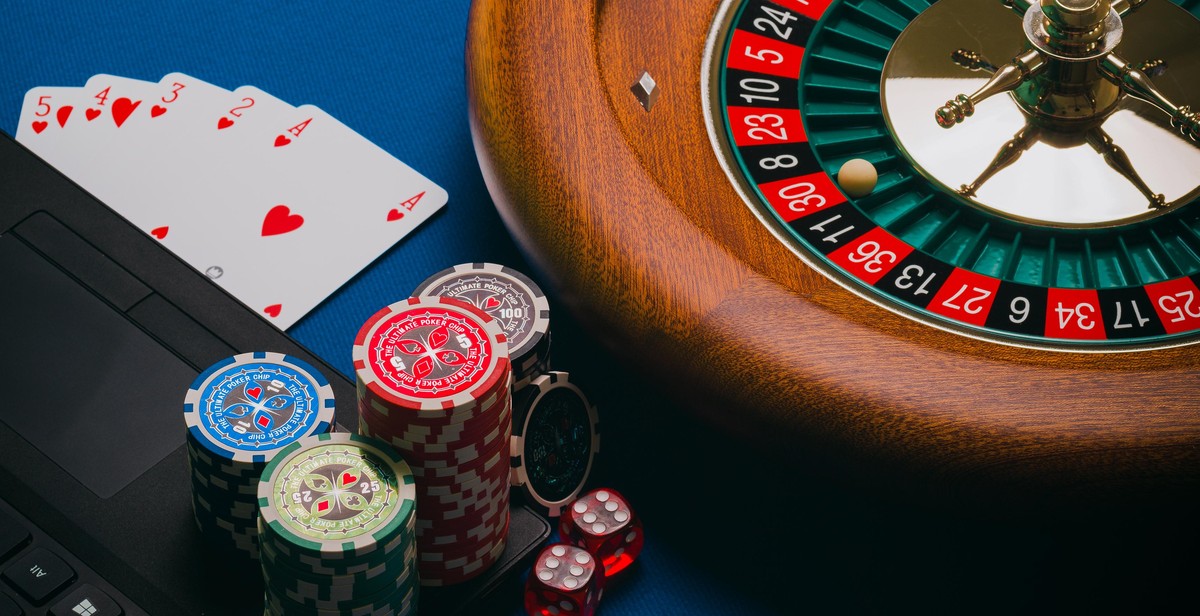How to Develop a Winning Poker Face and Body Language
Playing poker is not just about having a good hand or making the right decisions. It’s also about projecting the right image to your opponents. This is where a poker face and body language come into play. A poker face is a term used to describe a player’s ability to hide their emotions and keep a straight face, regardless of the hand they have been dealt. Body language is also crucial in poker because it can give away valuable information about a player’s hand.
What is a Poker Face?
A poker face is a blank expression that conceals a player’s emotions, preventing their opponents from reading their hand based on their facial expressions. It involves controlling your facial expressions, body language, and tone of voice. A good poker face will make it difficult for your opponents to know whether you have a good hand or a bad one. It’s an essential skill to master if you want to be a successful poker player.
Why is Body Language Important in Poker?
Body language is a non-verbal way of communicating, and it can reveal a lot about what a player is thinking or feeling. In poker, body language can give away valuable information about a player’s hand, even if they are trying to hide it with a poker face. For example, if a player is nervous, they may fidget with their chips or glance at their cards more frequently. On the other hand, if a player is confident, they may sit up straighter or make more aggressive bets. Learning to read your opponents’ body language can give you a significant advantage at the poker table.

Developing Your Poker Face
When it comes to playing poker, your facial expressions and body language can be just as important as the cards in your hand. A winning poker face can help you deceive your opponents and make them believe that you have a strong hand, even when you don’t. Here are some tips to help you develop your poker face:
Understand the Importance of a Neutral Expression
A neutral expression is crucial when playing poker. You don’t want to give away any hints about the strength of your hand or your emotions. A neutral expression involves relaxing your face and avoiding any twitching or movements that could give away your thoughts.
Practice in Front of a Mirror
Practicing in front of a mirror can help you develop your poker face. Try different expressions and see how they look. Pay attention to your eyes, mouth, and forehead. Practice until you can maintain a neutral expression without any effort.
Control Your Breathing
Your breathing can give away your emotions, so it’s important to control it when playing poker. Take slow, deep breaths to help you relax and maintain a neutral expression. Avoid shallow breathing or holding your breath, as this can indicate anxiety or excitement.
Relax Your Muscles
Tense muscles can be a sign of nervousness or stress. To develop a winning poker face, it’s important to relax your muscles. Focus on your shoulders, neck, and jaw. Take deep breaths and consciously relax these areas.
Meditation and Visualization Techniques
Meditation and visualization techniques can help you develop a calm and focused mindset, which is essential for a winning poker face. Visualize yourself playing poker with a neutral expression and winning the game. This can help you develop the confidence and concentration you need to succeed.
By following these tips, you can develop a winning poker face that will help you deceive your opponents and increase your chances of success at the table. Remember to practice consistently and stay focused on your goals.

Mastering Body Language in Poker
Body language is an essential aspect of playing poker. It can help you read your opponents and give you an edge in the game. Here are some tips on how to master body language in poker:
Be Aware of Your Gestures and Movements
One of the most important things to be aware of when playing poker is your own body language. The way you move, gesture, and even breathe can give away your hand. Make sure you are conscious of your movements and try to keep them consistent throughout the game. This will help you avoid giving away any tells to your opponents.
Pay Attention to Your Opponent’s Body Language
Another crucial aspect of mastering body language in poker is to pay attention to your opponent’s body language. Watch how they move, gesture, and react to the cards on the table. This will give you valuable insight into what kind of hand they might have and what they might be thinking.
Understand the Different Types of Body Language
There are many different types of body language that you should be aware of when playing poker. Some common examples include facial expressions, hand gestures, and posture. Understanding these different types of body language will help you read your opponents and make more informed decisions.
Use Body Language to Your Advantage
Finally, it’s important to use body language to your advantage. You can use your own body language to bluff your opponents or to make them think you have a stronger hand than you actually do. Additionally, by reading your opponent’s body language, you can make better decisions about when to call, raise, or fold.
| Body Language | Meaning |
|---|---|
| Facial expressions | Can indicate confidence or nervousness |
| Hand gestures | Can indicate strength or weakness |
| Posture | Can indicate confidence or weakness |
By mastering body language in poker, you can gain an edge over your opponents and increase your chances of winning. Remember to be aware of your own gestures and movements, pay attention to your opponent’s body language, understand the different types of body language, and use it to your advantage.

Tips for Winning at Poker
Developing a winning poker face and body language takes more than just practice. Here are some tips to help you improve your game:
Practice, Practice, Practice
There’s no substitute for practice when it comes to improving your poker skills. The more you play, the better you’ll get at reading your opponents and making strategic decisions. Try playing with different groups of people to gain experience with different playing styles.
Learn to Read Your Opponents
One of the most important skills in poker is being able to read your opponents. Pay attention to their body language, facial expressions, and betting patterns. This will give you clues about the strength of their hand and whether they are bluffing or not. Don’t forget to also watch your own body language and try to keep it neutral to avoid giving away any tells.
Stay Calm and Focused
It’s easy to get caught up in the excitement of the game, but it’s important to stay calm and focused. Don’t let your emotions cloud your judgment or cause you to make impulsive decisions. Take your time to think through each move and stay focused on the game.
Know When to Fold
Knowing when to fold is just as important as knowing when to bet. Don’t be afraid to fold if you have a weak hand or if the odds are not in your favor. It’s better to cut your losses and wait for a better opportunity than to keep betting and lose more money.
Stay Confident
Confidence is key when it comes to poker. Believe in your abilities and trust your instincts. Don’t let a few bad hands shake your confidence or cause you to doubt yourself. Stay positive and focused, and you’ll be more likely to come out on top.
By practicing these tips and developing your skills, you can improve your chances of winning at poker and developing a winning poker face and body language.

Conclusion
Developing a winning poker face and body language is essential for any poker player who wants to succeed in the game. By mastering the art of controlling your facial expressions and body movements, you can significantly improve your chances of winning at the poker table.
Key Takeaways
- Practice maintaining a neutral facial expression and body language during a game of poker to avoid giving away any tells.
- Pay close attention to your opponents’ body language and facial expressions to try and identify any tells they may be giving away.
- Use your body language and facial expressions to bluff and deceive your opponents, but make sure you do so in a subtle and convincing way.
- Remember that developing a winning poker face and body language takes time and practice, so be patient and persistent in your efforts.
Finally, it’s important to remember that while mastering your poker face and body language can give you an advantage at the table, it’s not the only factor that determines your success in the game. You also need to have a solid understanding of poker strategy and be able to make calculated decisions based on the cards you’re dealt.
| Related Articles: | 10 Essential Poker Tips for Beginners | How to Read Your Opponents in Poker | The Importance of Position in Poker |
By combining your mastery of poker face and body language with a solid poker strategy, you’ll be well on your way to becoming a successful poker player.
